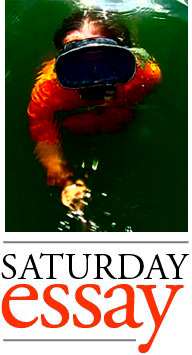 I have four hooded sweatshirts in my closet. That’s probably not an unusual number, because the hoodie is a popular shirt style. It also seems like a very practical garment, designed to keep people warm and cozy. It’s like an indoor/outdoor jackety blanket for people who don’t want to feel weird about wearing a jacket inside or a blanket outside.
I have four hooded sweatshirts in my closet. That’s probably not an unusual number, because the hoodie is a popular shirt style. It also seems like a very practical garment, designed to keep people warm and cozy. It’s like an indoor/outdoor jackety blanket for people who don’t want to feel weird about wearing a jacket inside or a blanket outside.
Though I sometimes wear hoodies and appreciate the idea behind the design, I don’t actually like them. The reason is that there are really only two things that differentiate a hoodie from a sweatshirt — the hood and the kangaroo pocket. And both of those things are stupid.
Yet, somehow, hoodies are far more popular than regular sweatshirts. The reason, I think, is because most people believe they sincerely like the hood and the jumbo single-pocket abdominal pad. But really, they don’t. They just can’t.
Surely hoodie lovers have been waiting for decades for someone to come along and explain how stupid they are. Well, here I am. Society is now just a few paragraphs away from the end of the hoodie, because everyone is going to agree with me, change their ways immediately, and heap praise upon me for freeing them from their misguided perceptions of fashion and comfort.



















